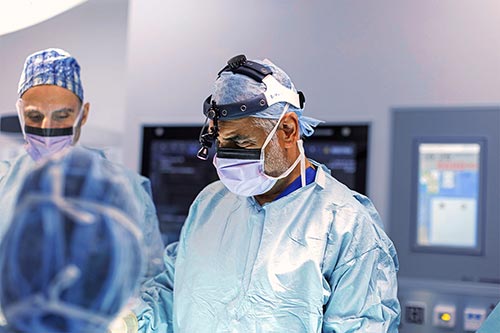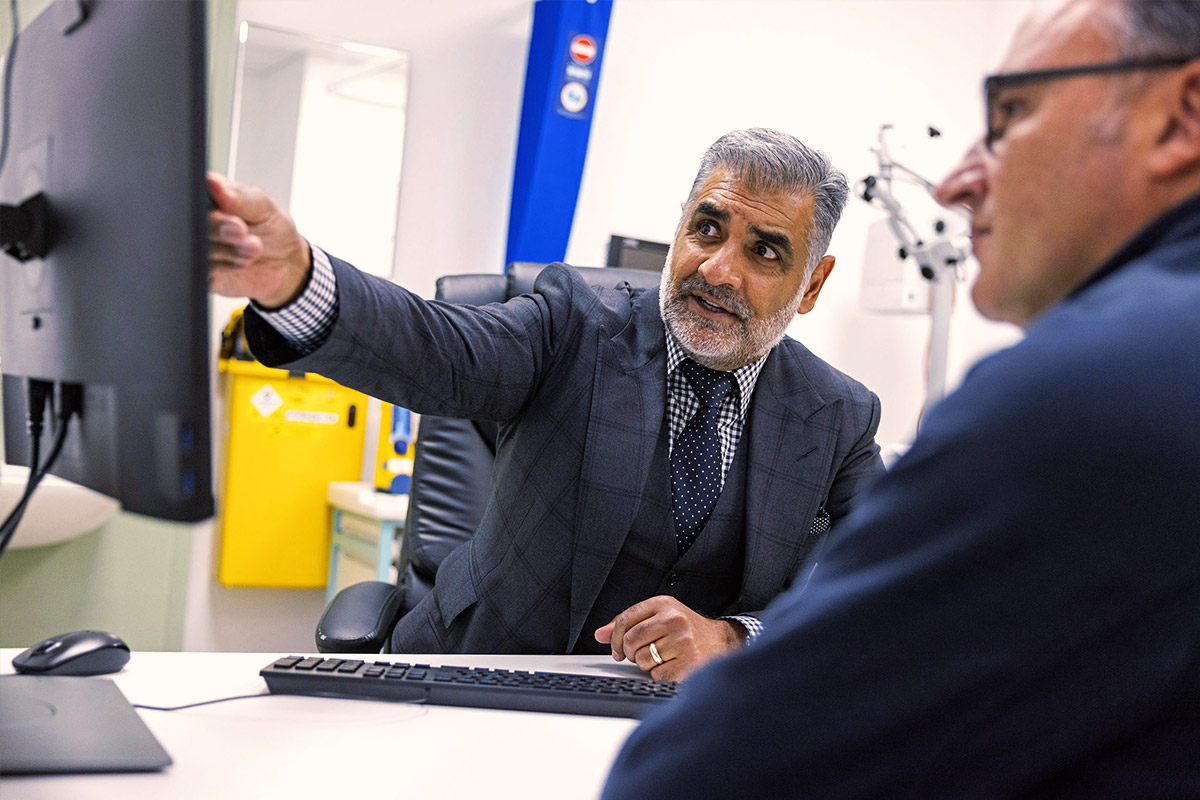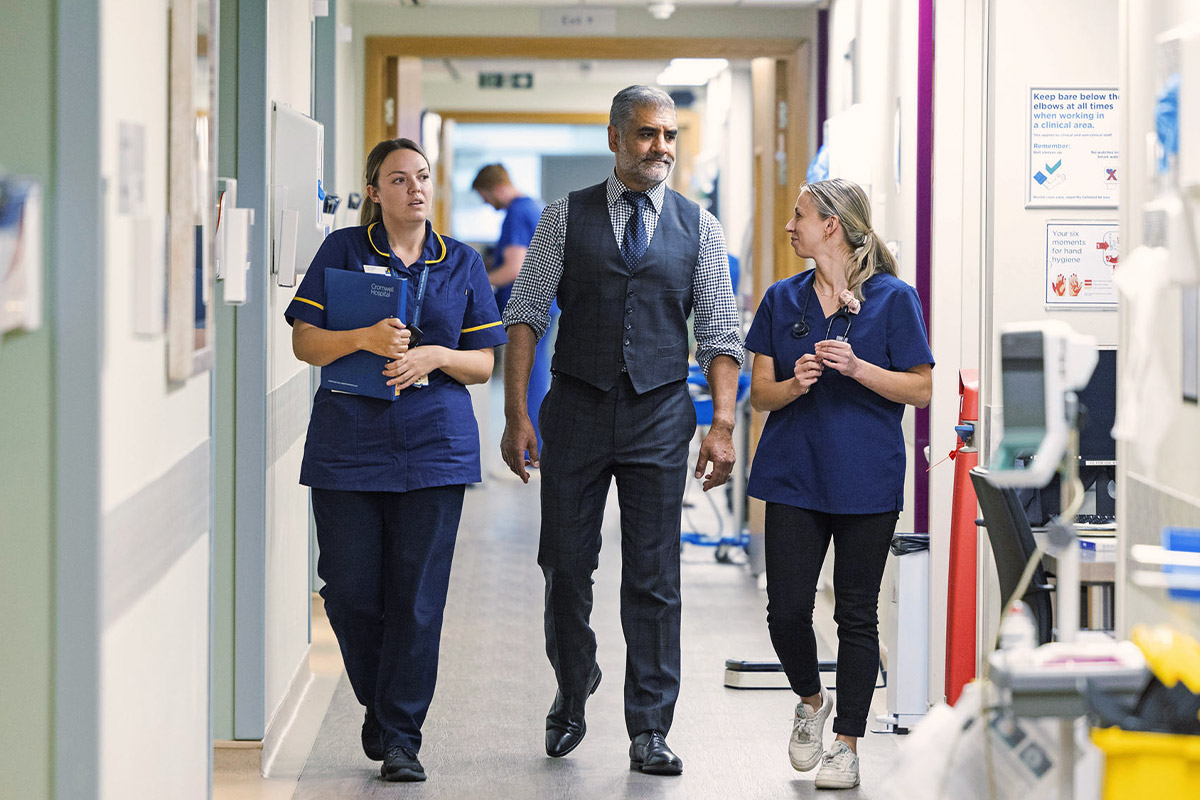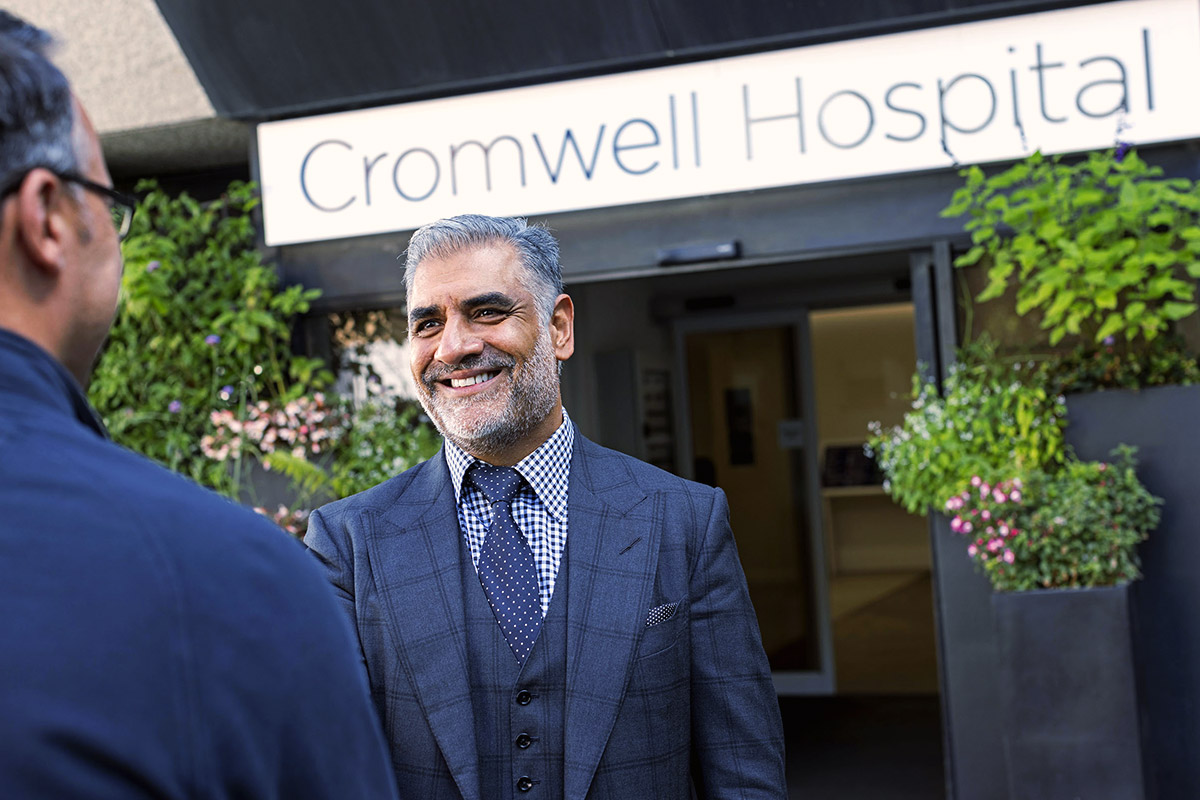Aortic Valve Stenosis
Read MoreASSOCIATED CONDITIONS
Aortic Valve Stenosis
Aortic valve stenosis occurs when the aortic valve begins to stiffen and restrict blood flow through it from the left ventricle to the body.
Aortic Valve Stenosis Causes
Congenital (hereditary) aortic stenosis can occur creating problems in infancy or in later life. Rheumatic fever in childhood can also cause an acquired form of aortic stenosis.
As we get older, the aortic valve can begin to degenerate and calcify. This can produce aortic stenosis in older age.
Aortic Valve Stenosis Symptoms
There is a range of aortic stenosis symptoms a patient might experience. Milder forms of aortic stenosis can produce very little in the way of aortic stenosis symptoms. The disease invariably progresses, and it is important to monitor advancement of the disease, since late referral for surgical intervention can lead to premature death. Therefore aortic stenosis treatment is always the best answer.
Aortic stenosis symptoms include breathlessness, fainting episodes (syncope) and palpitations. As Aortic Valve Stenosis worsens, the heart muscle thickens up in order to try and force the blood through the aortic valve more powerfully.
This process can worsen the problem as the heart begins to become too large for its own blood supply. This can produce chest pain or angina.
Aortic Valve Stenosis Treatment London
As there are aortic stenosis treatments in London available to you, once aortic stenosis symptoms develop, medical therapy with tablets is not advised since the risk of serious complications or death without relief of the aortic stenosis with surgery is very high. Therefore, the best aortic stenosis treatment available is surgery, and your doctor will be able to explain and recommend different kinds of aortic stenosis treatment London with you. Contact our London Heart Clinic or Essex Heart Clinic for more information.
Aortic Valve Stenosis Surgery
The best treatment, by far, is replacement of your aortic valve by surgery. This treatment is effective, and will make you feel better, and live a longer, healthier life.
Keyhole Aortic Valve Stenosis Surgery London
Aortic stenosis treatment, such as aortic valve replacement, can be performed through keyhole incisions that either divide only a very small portion of the breastbone, or, in some cases, can avoid breastbone division altogether. The advantages are quicker healing, improved breathing, less bleeding complications swifter discharge from hospital. Patients’ also prefer the improved cosmetic look of the incision. We would always recommend a keyhole approach to aortic stenosis surgery in patients where it is applicable, but as it is not available for every type of patient, your doctor will advise the best course of action for you.
Please find below some diagrams showing the different types of aortic stenosis surgery available, and the different benefits and disadvantages of each:
Sternotomy
- Full Breastbone Division
- 12 weeks to heal
Ministernotomy
- Less Pain / Bleeding
- Better Breathing
- Less Infection
Anterior Right
- Thoracotomy
- No broken bone
- Heals in 7 to 10 days
- Less Pain / Bleeding
- Better Breathing
- Less Infection
Transcatheter Aortic Valve Implantation (TAVI)
In high risk patients, an alternative treatment called Transfemoral Aortic Valve Implantation (TAVI) can be used as a way to offer patients some relief from their aortic stenosis symptoms without the need for aortic stenosis surgery, but the results are not as good in the long term, so we would only offer this to very high risk patients.
The ongoing limitation of TAVI is the risk of leaks around the edge of the new valve, the high incidence of pacemaker requirement, and the lack of long-term durability of TAVI valves, which make them unsuitable for patients who need a good result beyond 3 to 5 years. The best treatment is still surgical replacement.
Sutureless AVR
These valves are essentially exactly the same as traditional tissue valves and we believe that the long-term durability of the prosthesis is excellent. The advantage of these valves lies in the fact that they can be deployed very swiftly. This makes them very suitable for patients who need a swift operation to reduce the risk of the surgery. They also facilitate minimally invasive AVR procedures because of their ease and speed of deployment.
Services
How We Can Help You









